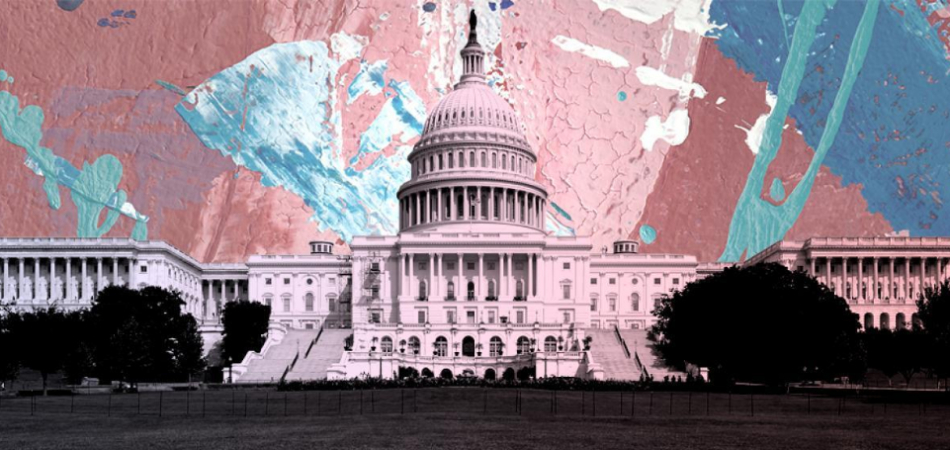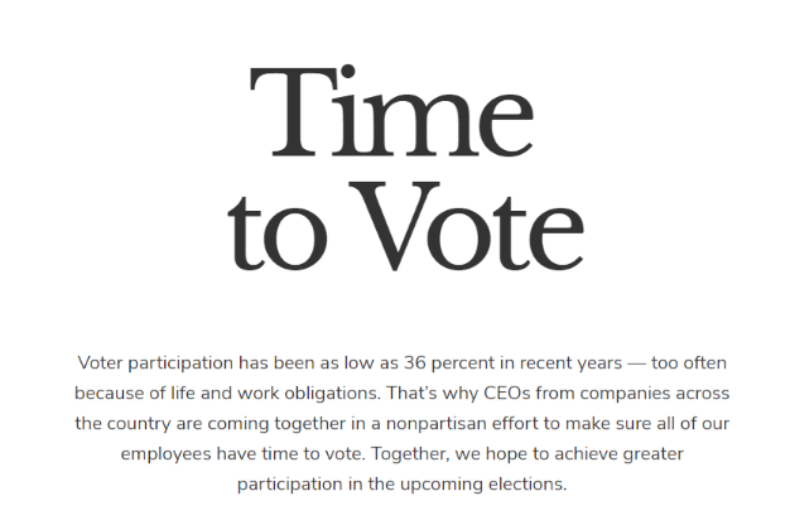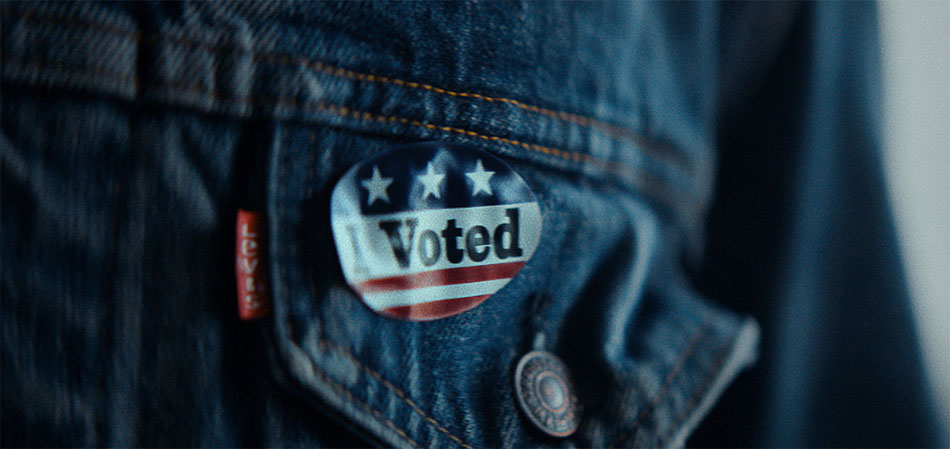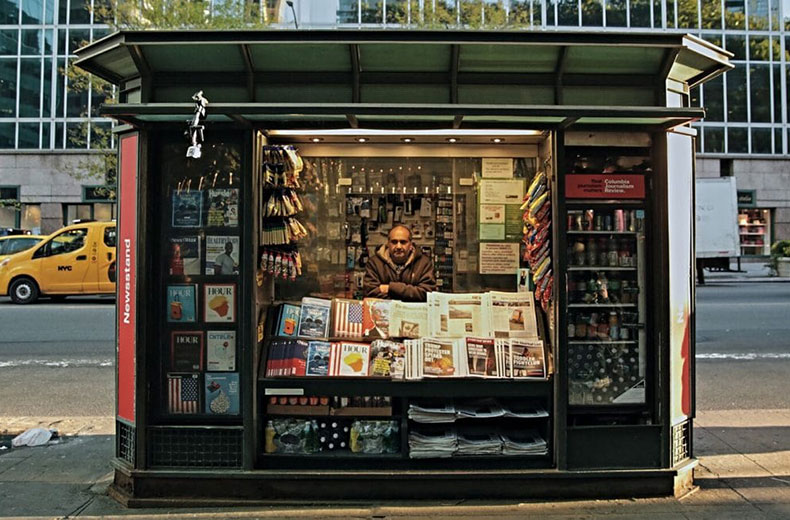
‘Subculture is the most powerful tool we have’
Louis Persent, Co-Founder and Creative Director at Weirdo on the power of embracing the niche
Although brands have been involved in encouraging voters in the past, the US midterm elections seem to mark the largest push by companies doing what they can to assist the democratic process.


Over the last two years, American politics has been impossible to ignore, as has the man at the helm, the 45th President of the United States, Twittering billionaire Donald Trump.
When Trump was voted into power in 2016, shock seem to reverberate around the world. How did we not see it coming? How did a man who said he could stand on Fifth Avenue in New York, shoot somebody and still not lose voters, possibly become President?
Only 56% of Americans who are eligible to vote did so in the 2016 elections according to Vox. And the US has one of the lowest voter participation rates in the developed world, as low as 36% in the last midterms.
Currently the US Senate sits at 51 Republicans and 49 Democrats. This year the November 6th midterm election sees 35 seats up for grabs, so by retaining the seats they have and gaining two, the Democrats could take control of the House. This would have huge implications on the presidency, so encouraging Americans to speak up and use their voice is vitally important for both sides.
And brands aren’t holding back this time in offering their support and their voices. Where once it may have been risky to offer an opinion or show your colours, brands are realising that the polarisation of America is something they can’t ignore.
Although brands have been involved in encouraging voters in the past, the midterms seem to mark the largest push by companies doing what they can to assist the democratic process. The general feeling seems to be that you can’t sit in the middle anymore. As a brand, as an individual, you have to pick your side, and weigh in on it.

In September this year, a coalition of CEOs from almost 150 companies announced a joint campaign Time to Vote, aiming to encourage Americans to vote in the upcoming midterm elections. As part of the campaign, there will be company specific national ads and promotions but the principal focus is on businesses giving their employees time to leave work and get to the polls. The companies involved include Levi’s, Walmart, Patagonia, Gap and Southwest Airlines as well as several PR and communications firms, FleishmanHillard, Golin and Levick. Although the campaign says it’s nonpartisan and the move is simply to encourage higher voter turnout, many of the brands involved have previously expressed views that argue against the Trump agenda.
The ride-sharing services Uber and Lyft are both giving people free rides to their closest polling station on election day. Uber has partnered with #VoteTogether and Democracy Works on the initiative which is being offered because lack of transport is a reason often given for people being unable to get to the polls. An estimated 15 million people were registered to vote in 2016, but then didn’t because of transport issues. On Election Day, Uber will install an in-app Get to the Polls button to make the process as easy as possible for users.
Lyft announced back in August that they would do the same by giving 50% discounts to riders as well as free rides to those in underserved communities. Lyft is also partnering with Voto Latino to give rides to voters in Dodge City, Kansas after the city’s only polling site was moved outside the city limits, more than a mile from the nearest bus stop. Lyft’s rides are also being sponsored by Johnnie Walker and Steve Madden. Both companies are partnering with non-profits to raise awareness and, as Uber CEO Dara Khosrowshahi said, “support our democratic process.”
Many more young people will be voting in these midterms who would not have been old enough to vote in 2016. They are arguably one of the most engaged and active generations because they feel a more personal connection to human rights issues, the environment, gun safety, immigration.
Historically, those in the youngest voting age bracket have failed to vote. This looks set to change this year. Sierra Club Voter Education Fund’s created a video #WhyDoYouVote? that sees acclaimed director Darren Aronofsky team up with 15 Gen Z activists to ask them why they vote, in turn encouraging their peers to register. All the activists are between the ages of 18 and 20 and so none were old enough to vote in 2016. Now they are and they care deeply and passionately about a variety of causes. They have been making their voices heard and now they want to make their votes count. The ad will run with targeted digital promotion aimed at social media users aged between 18 and 22.
Only 46% of people aged 18-34 voted in the last election, while 72% of the “Silent Generation” (71+ years old) voted. A satirical spot from Nail Communications and political organisation ACRONYM sees older people telling the young, don’t bother to vote. The ad, part of the Knock the Vote campaign, highlights the traditional, stereotyped attitudes the oldest generation are deemed to have. Ultimately the ad is about encouraging the younger generations to get out and vote, and to not leave their country in the hands of a generation who, as one woman frankly puts it, will be dead before anything too bad happens.
Sometimes it’s not enough to whisper your message when it needs to be screamed. Gun violence in the US pervades the global news feeds, seemingly happening every single day. This never-ending, hideous cycle is what the musician Kesha, her younger brother Sage Sebert, McCann New York and March For Our Lives set out to highlight with The Most Vicious Cycle. Working with production house The Mill the video employed a Rude Goldberg device to show how the chain of events will continue if we do nothing. It demonstrates the frustration of the endless loop of incident after incident by playing the three minute video on a loop three times, driving the point even further home.
Patagonia has openly criticised President Trump over the last few years, most noticeably over his decision to shrink the size of several national parks. On this election day, the company is closing all its stores and its headquarters to encourage people to get to the polls. The brand has also endorsed two democratic candidates from Montana and Nevada who are focused on protecting public land and waters. This seems to be a rare move from a brand as few would go as far to back an actual politician. As Patagonia’s press release stated, “The difference with our activism is that we put our logo on it.”
Ben & Jerry’s have similarly shown their active support of four non-profits, as well as their distaste for Trump, by creating a limited edition tub of ice cream called Pecan Resist. The ice cream is to support groups “who are fighting President Trump’s regressive agenda.” As the brand said in an Instagram post, “we cannot be silent in the face of the President’s policies that attack and attempt to roll back decades of progression”, a sentiment that echoes that of many brands this year.

Some brands have been more subtle in their approach. Levi’s has created a national ad, Use Your Vote, that will air during NFL broadcasts on Fox. Although seemingly just a message of encouragement to vote, the ad’s soundtrack is Aretha Franklin’s Think which principally focuses on freedom. It’s undoubtably a political ad but one that never actually stakes its politics. The brand’s values are subtly implied throughout the ad as we see Muslim women, people of colour and others heading out to vote, communities of people who have felt continually persecuted by the Trump administration. As the brand says, “It’s your voice, it’s your vote”. As part of the Time to Vote initiative, Levi’s is also giving its employees three hours off to go and vote.

Fake news is a term that has plagued Trump’s Presidency, as he continually blasts the media for their falsified claims. Photos lie, statistics are wrong and journalists are just plain stupid, according to him. To highlight the pervasiveness of this, TBWA/Chiat/Day New York created The Fake News Stand for the Columbia Journalism Review, a non-profit outlet published by the Columbia University Journalism School. Instead of the usual magazines on display, replicas were produced with headlines taken from unsubstantiated, false stories that circulated online. The physicality of the magazines demonstrates how these viral internet stories can make their way into mainstream, offline publications. The activation is happening in advance of the midterms to raise awareness of the dangers of misinformation we can come across in the media.
Looks like you need to create a Creativebrief account to perform this action.
Create account Sign inLooks like you need to create a Creativebrief account to perform this action.
Create account Sign in